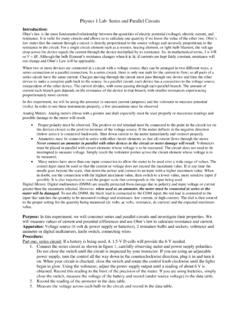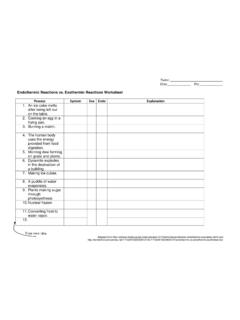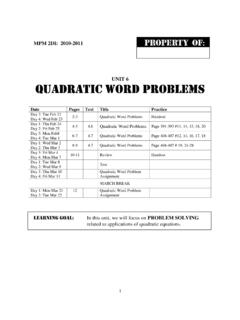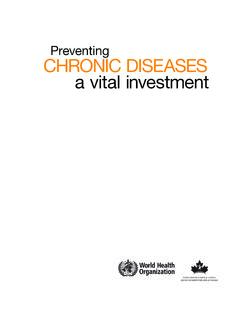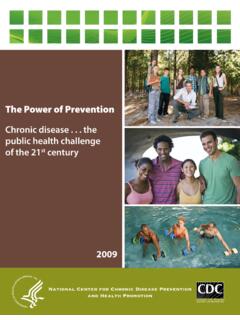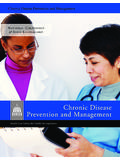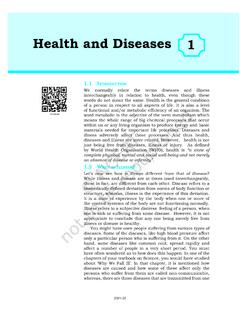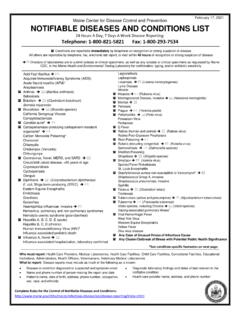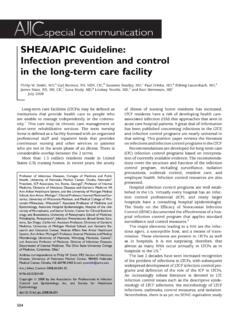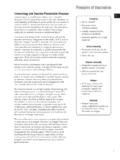Transcription of CAUSES, SYMPTOMS, PREVENTION, AND TREATMENT OF …
1 - 1 -ANIMAL SCIENCE8822-BCAUSES, SYMPTOMS, prevention , AND TREATMENTOF VARIOUS ANIMAL DISEASESINTRODUCTIONIt is impossible to accurately estimate all the losses causedby livestock diseases, but the United States Departmentof Agriculture estimates that losses caused by mortality,reduced productivity, lower fertility, condemned prod-ucts, and restricted access to potential markets billion dollars annually in the United States. Thoselosses represent almost 17% of the production costs as-sociated with the livestock production is an integral part of the way-of-life for the people of the world.
2 Many farmers andranchers depend upon livestock production for their livelihoods. Consumers expect adequate supplies ofmeat at economical prices. With livestock mismanagement and spread of diseases*, we are all OF DISEASESD isease causes body functions to disfunction or function improperly. Three principal reasons most oftencited for the spread of diseases are poor sanitation, improper management, and introduction of new ani-mals into a or more of the following defects cause defects - An imbalance of required food nutrients in the ration is the cause of nutritional receiving inadequate amounts of vitamins, minerals, fats, carbohydrates, and protein cannot produceefficiently.
3 Therefore, their levels of resistance to disease are defects - These defects cause an improper functioning of glands, organs, or body systems. Therelationship between the diet and the proper functioning of body parts is directly related. For example, thethyroid gland regulates the rate of body metabolism and depends upon an adequate supply of iodine tofunction properly. An improperly functioning thyroid gland may increase the nutritive requirements of animalsto the point that very few nutrients are available for growth or production.* Underlined words are defined in the Glossary of 2 -Morphological defects (physical defects) - An accident or negligence is responsible for physical defects.
4 Cuts,scrapes, scratches, bruises, and broken bones are examples of morphological defects. Any one of these cantemporarily or permanently reduce the efficiency of an animal. Good management practices help eliminatedefects of this defects - Certain organisms produce toxins or poisons that upset the normal metabolic activity ofthe animal. Viruses and bacteria are the most common disease -causing pathogens. They are microscopic insize and capable of multiplying rapidly under ideal environmental conditions. Other pathogens are fungi andprotozoans. A discussion of each type diseases are the most difficult to control because viruses closely resemble the chemical compoundsthat make up a cell.
5 Another problem in controlling viruses is that the chemicals capable of killing or control-ling them also kill or destroy the host cell. Preventive vaccinations are the most successful method ofcontrolling viral are microscopic in size, produce powerful toxins, and multiply rapidly. Many bacteria are capableof forming spores, resistant forms of bacterial cells able to withstand severe environmental spores are difficult to control and may lie dormant for years before being provided with the opportu-nity to cause disease . Antibiotics are used successfully to control diseases are caused by fungi, which are small organisms.
6 Many disease -producing fungi live in thesoil. It is often difficult to determine the cause of fungal diseases, because bacteria cause a secondaryinfection and are often erroneously identified as are one celled and the simplest form of animal life. Some protozoa cannot move themselves andmust be transported by other means. Some move by making whip-like lashes or vibrating projections. Anumber of different kinds of protozoa prey upon animals and cause GOOD MANAGEMENT PRACTICES Animals to be added to a herd should be isolated 3 to 4 weeks before they are placed with the herd.
7 Thisincludes both new animals and those removed from the herd and exposed to other animals. A sound immunization program should be followed. Clean, healthful surroundings should be provided. Rations must be nutritionally adequate. Visitors and new animals should not be allowed in the livestock area. Diseases should be accurately and quickly diagnosed. A competent veterinarian should be consulted when a health problem arises. Livestock should be handled properly. Examples of how to handle animals include the following:oCanvas slappers, rather than clubs and whips, should be nails and broken boards should be and equipment should be removed from the cattle should be and trucks should be bedded should be loaded slowly and should be used to separate different classes of should be protected from inclement 3 - CHARACTERISTICS OF COMMON DISEASES disease Cause Symptoms prevention & Control NUTRITIONAL DEFECTS Anemia All farm animals are susceptible.
8 Iron deficiency prevents the formation of hemoglobin, a red iron-containing pigment in the red blood cells responsible for carrying oxygen to the cells. Characterized by general weakness and a lack of vigor. A balanced ration usually prevents the occurrence of anemia. Bloat Typically occurs when animals are grazing on highly productive pastures during the wetter part of late spring & summer. Swollen abdomen on the left side, labored breathing, profuse salivation, groaning, lack of appetite, & stiffness. Maintain pastures composed of 50% or more grass. Colic Improper feeding.
9 Pain, sweating, & constipation, kicking, & groaning. Careful feeding. Enterotoxemia Bacteria & overeating. Constipation is an early symptom & sometimes followed by diarrhea. Bacterin or antitoxin vaccine should be used at the beginning of the feeding period. Founder Overeating of grain, or lush, highly improved pasture grasses. Affected animals experience pain and may have fever as high as 106 degrees F. Good management & feeding practices prevent the disease . VIRAL DISEASES Cholera Caused by a filterable virus. Loss of appetite, high fever, reddish-purplish patchwork of coloration on the affected stomach, breathing difficulty& a wobbly gait.
10 A preventive vaccine is available. No effective TREATMENT . Producers should use good management. Equine Encephalomyelitis Viruses classified as group A & B are transmitted by blood-sucking insects, such as the mosquito. Fever, impaired vision, irregular gait, muscle spasms, a pendulous lower lip, walking aimlessly. Control of carrier, use of a vaccine. Hemorrhagic Septicemia Caused by a bacterium that seems to multiply rapidly when animals are subject to stress conditions. Fever, difficultly breathing, a cough, & discharge from the eyes & nose. Vaccination several days prior to shipping or other periods of stress.
